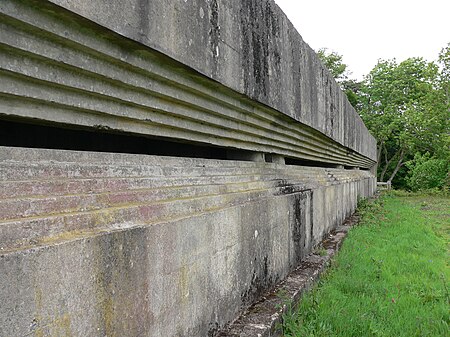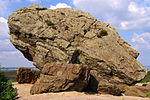Fort Henry, Dorset

Fort Henry is a Grade II listed World War Two observation bunker overlooking Studland Bay, in Dorset. It was built in 1943 to defend the bay from possible German invasion along with other beach defences such as gun emplacements, Type 25 pill boxes and concrete Dragon’s Teeth anti-tank obstacles (which have also been listed for protection).Located at the top of Redend Point, on a small sandstone promontory, the bunker is 90 feet (27 m) long with walls, floor and ceiling all 3 feet (0.91 m) thick. There is an 80 feet (24 m) wide recessed observation slit. Its name derives from the home base in Ontario of the Canadian Royal Engineers who built it. Today, it is owned by the National Trust and forms part of the Studland Beach Second World War walk.An English Heritage spokesman commented following the bunker's listing on 20 November 2012: Fort Henry provides an impression of the scale and significance of the preparations for D-Day and is associated with the most prominent figures of the Allied forces. Studland Bay is known for its beaches and wildlife but it is great that its role in the Second World War has now been recognised.
Excerpt from the Wikipedia article Fort Henry, Dorset (License: CC BY-SA 3.0, Authors, Images).Fort Henry, Dorset
Manor Road,
Geographical coordinates (GPS) Address External links Nearby Places Show on map
Geographical coordinates (GPS)
| Latitude | Longitude |
|---|---|
| N 50.64524 ° | E -1.94785 ° |
Address
Fort Henry
Manor Road
BH19 3AU , Studland
England, United Kingdom
Open on Google Maps










